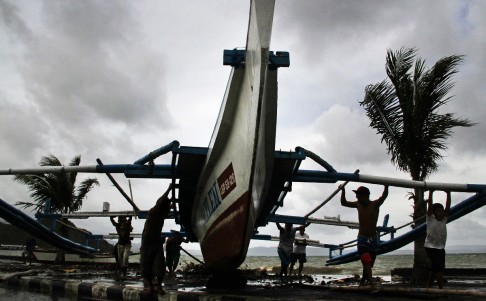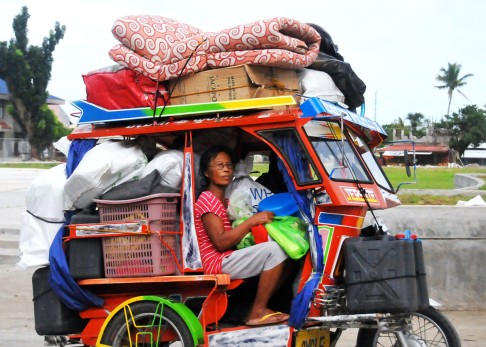
Thousands stranded as super typhoon Hagupit surges closer to Philippines
Ports were shut across the Philippines, leaving thousands of travellers stranded as super typhoon Hagupit swept towards the nation’s eastern coasts on Friday.
Ports were shut across the Philippines, leaving thousands of travellers stranded, and some local governments ordered forced evacuations on Friday as super typhoon Hagupit swept towards the nation’s eastern coasts.
Hagupit, or Ruby, was churning across the Pacific with the eye of the storm around 500 kilometres southeast of the Philippines, the local weather bureau said, packing winds of up to 215 km/h near the centre with gusts of up to 250km/h.
More than 2,000 passengers were stuck in ports in Manila, the central Philippines and Mindanao island in the south after the coastguard stopped sea travel ahead of the category 5 storm, which could hit areas devastated by typhoon Haiyan last year.
“We’ve warned them early to move away from shore, not just anchor their ships, because previously they just anchored their ships. … The waves lifted them and washed them ashore,” Armand Balilo, a coastguard spokesman, said in a radio interview.

The storm was moving towards land at around 15 km/h.
On Thursday, the government said it was considering declaring a state of national calamity to freeze prices of basic goods, and President Benigno Aquino ordered the trade department to send more food supplies to provinces at risk amid reports of panic-buying of basic supplies.

While the local weather bureau and the Japan Meteorological Agency predicted Hagupit – Filipino for “lash” – making a direct hit on the central Philippines, the forecasting website Tropical Storm Risk and the Joint Typhoon Warning Centre of the US navy showed the storm veering north, closer to the capital Manila.

Tropical Storm Risks was predicting on Friday that the typhoon would have weakened to a category 4 – still a powerful storm – when it made landfall.
Eastern Samar and the island of Leyte were worst-hit by 250 km/h winds and storm surges brought by Haiyan, one of the strongest storms ever to make landfall. About 25,000 people still live in tents, shelters and bunkhouses more than a year after Haiyan.

